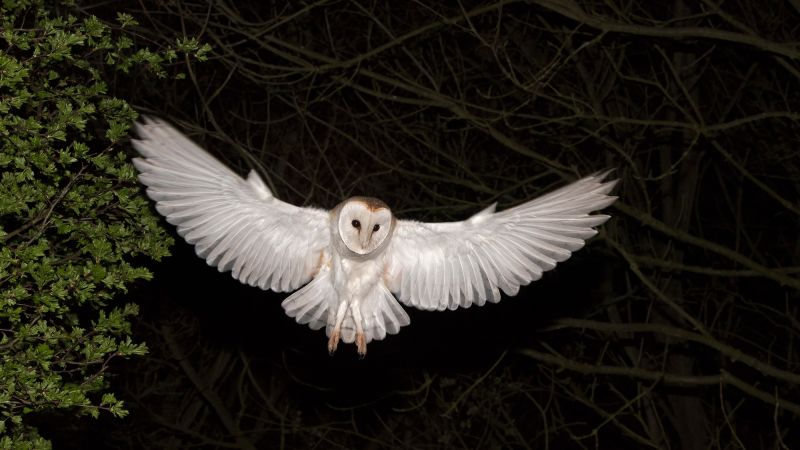Barn owls, those enchanting nocturnal hunters, quietly glide through the nighttime sky. With their distinctively white underbellies and wings, they exhibit a plumage that seems counterproductive to their predatory lifestyle. At first glance, this brilliant whiteness could compromise their stealth, making them more conspicuous to their prey – rodents that scurry across the ground. This peculiar contradiction has intrigued scientists, prompting extensive investigation into the evolutionary advantages of the barn owl’s striking appearance.
Dr. Juanjo Negro, a research professor at the Doñana Biological Station associated with the Spanish National Research Council in Seville, Spain, led a team that sought to unravel the mystery behind the barn owl’s unique coloration. Negro and his colleagues were motivated by the assumption that such eye-catching whiteness might confer some adaptive advantage. In a previous study from 2019, researchers had suggested that the bright hue might instill a sense of fear in rodents, causing them to freeze in response to the sudden appearance of the predator, thus inadvertently increasing the barn owl’s hunting success.
Instead of reinforcing the shock and awe theory, the latest research proposes that barn owls utilize their strikingly white plumage as a form of camouflage or counter-illumination. The findings, published in the journal Proceedings of the National Academy of Sciences (PNAS), indicate that the barn owl’s reflective underside is a clever mimicry of moonlight. This trait allows their silhouettes to blend seamlessly into the backdrop of the night sky. Negro describes it as follows: “When the moon is visible, the sky has some brightness that varies depending on the observing direction. Under these conditions, a dark bird would be seen by its potential prey as a black silhouette against the sky.”
The implications of this research are significant. The scientists calculated that the contrast between barn owls’ reflective underbellies and the illuminated night sky is subtle enough to fall below the detection threshold of rodent vision. This strategic advantage aids the barn owl in closing in on its prey from various angles, undetected. Negro emphasized that his team’s explanation adds a new dimension to the understanding of barn owl coloration, noting that such an adaptive use of brightness has not been explored in recognition of the bird’s behavior.
Interestingly, there are parallels in nature, as the phenomenon is akin to how certain fish exhibit light-colored undersides to blend with sunlit water, aiding them in avoiding underwater predators. Nevertheless, not all barn owls possess the characteristic white underbellies; some display reddish-brown feathers, a variation that introduces an intriguing layer to the discussions on hunting efficacy linked to plumage color.
While Negro asserts that owls with luminously white plumage have demonstrated enhanced hunting success, particularly during full moons, expert Alexandre Roulin from the University of Lausanne, who previously advocated the ‘shock and awe’ hypothesis, approached the new theory with cautious intrigue. Roulin is not entirely convinced of the effectiveness of the nocturnal camouflage explanation but acknowledges the potential of the theories to complement each other. He highlights a critical area needing further investigation: the behavior of voles under moonlight. His earlier observations indicated that voles demonstrate prolonged immobility when confronted with a white owl versus a reddish one, a behavior attributed to their anti-predator response.
Negro concurred that the barn owl’s silent flight is at odds with the notion that the owl would want to appear more visible. However, he noted that this was not enough to wholly dismiss the previous hypothesis and pointed towards broader investigations needed in nocturnal ecology. The research highlighted the potential for animal coloration adaptations that support camouflage at night, a field that remains less explored compared to daytime concealment strategies.
In conclusion, as researchers delve deeper into the complexities of nocturnal adaptations, it becomes apparent that the barn owl’s white plumage embodies a captivating example of evolution at work. The intersection of light, color, and behavior in the dark continues to prompt vital questions about ecological dynamics and the adaptations that arise from them, promising an evolving understanding of our natural world. As Negro aptly noted, with a significant proportion of the world’s species thriving under the cloak of night, the implications of their adaptations are both vast and compelling.



